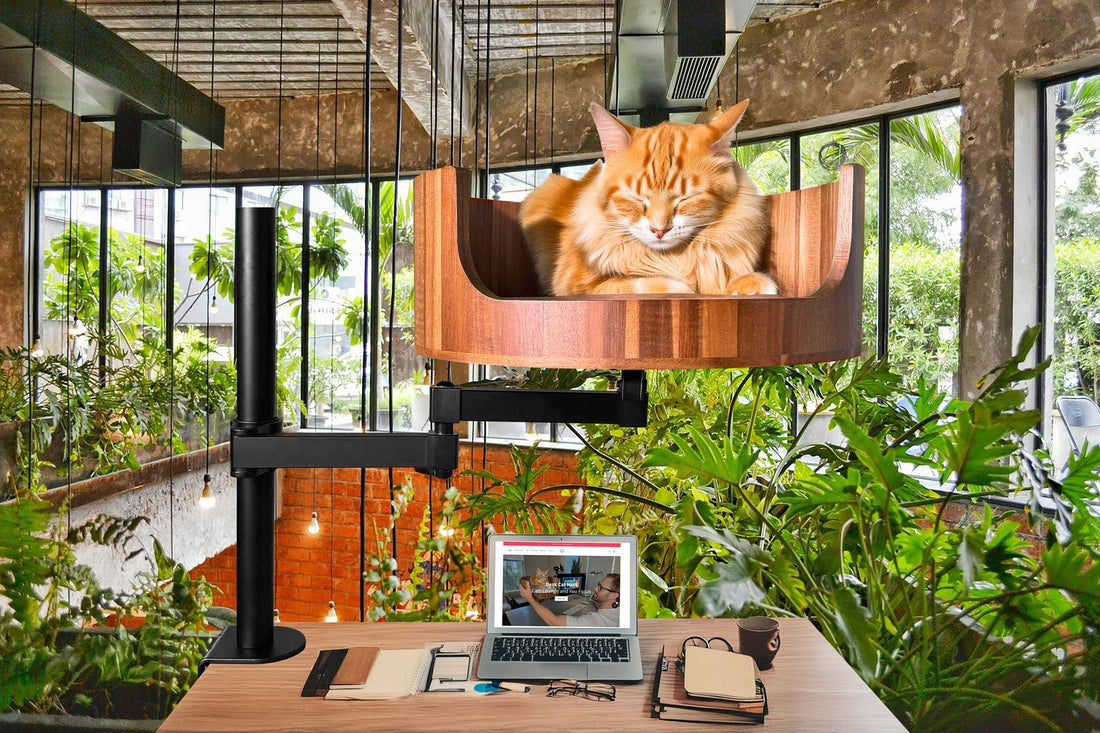
Why Does My Cat Chase Her Tail? Understanding the Behavior
Share
If you've ever caught your cat chasing her own tail, you're not alone. This seemingly strange behavior is actually quite common among felines, and it can be attributed to a variety of factors. In this article, we will delve into the reasons why cats chase their tails and what it can tell us about their behavior and overall well-being.
From playful kittens to curious adults, cats of all ages can be seen engaging in tail-chasing antics. While it may seem like a random or silly behavior, tail-chasing can actually serve several purposes for our furry friends. By understanding the motivations behind this behavior, we can gain insights into our cats' instincts, needs, and emotions. Through a combination of scientific research and expert insights, we will explore the possible reasons why cats chase their tails and how pet owners can respond to this behavior in a safe and supportive manner.
1. Cats chase their tails as a form of play behavior, similar to how they might chase a toy or a moving object.
2. Tail chasing can also be a sign of boredom or pent-up energy in cats, especially if they are not getting enough mental and physical stimulation.
3. Some cats may chase their tails due to anxiety or stress, so it's important to observe their overall behavior and provide a stress-free environment.
4. Medical issues such as fleas, skin allergies, or spinal problems could also lead to excessive tail chasing and should be ruled out by a veterinarian.
5. Understanding the reasons behind your cat's tail-chasing behavior can help you address any underlying issues and provide appropriate enrichment and support for your feline friend.
What is Tail Chasing?
Tail chasing is a common behavior observed in cats, where they spin around in circles trying to catch their own tail. This behavior is not limited to kittens but can also be seen in adult cats, although it is more commonly associated with younger felines. Tail chasing can sometimes be a sign of boredom or pent-up energy, but it can also be a natural instinct for cats to chase moving objects.
Possible Reasons for Tail Chasing
There are several reasons why a cat may chase her tail. One possible explanation is that the cat is trying to play or entertain herself. Cats are natural hunters and have a strong predatory instinct, so chasing their tail can simulate the thrill of catching prey. Additionally, tail chasing can also be a way for cats to release excess energy, especially if they are not getting enough physical or mental stimulation from their environment.
When to Worry About Tail Chasing
While tail chasing is usually harmless behavior, there are some cases where it may indicate an underlying issue. If a cat is constantly chasing her tail to the point of obsession, or if the behavior is accompanied by other unusual symptoms such as aggression or lethargy, it may be worth consulting a veterinarian. Tail chasing can sometimes be a sign of stress, anxiety, or even a medical condition such as fleas or worms.
How to Address Tail Chasing
If your cat is chasing her tail, there are several ways you can help redirect this behavior. Providing plenty of engaging toys, puzzle feeders, or interactive play sessions can help keep your cat mentally and physically stimulated. Additionally, creating a safe and enriching environment for your cat with plenty of vertical space, hiding spots, and scratching posts can help prevent boredom and reduce the likelihood of tail chasing. If the behavior persists or becomes problematic, consult with a veterinarian or animal behaviorist for further guidance.
Desk Cat Nest FAQ
Why does my cat chase her tail?
Chasing their tail can be a natural behavior for some cats. It can be a way for them to play, relieve boredom, or even catch their own "prey". However, excessive tail-chasing could also be a sign of stress or health issues, so it's important to monitor your cat's behavior and consult with a veterinarian if you have concerns.
How can Desk Cat Nest help with my cat chasing her tail?
Desk Cat Nest provides a cozy and secure space for your cat to relax and feel safe. By giving your cat a comfortable place to rest and observe their surroundings, they may be less likely to engage in behaviors like tail-chasing out of stress or boredom.
Will my cat actually use the Desk Cat Nest?
While we can't guarantee that every cat will take to the Desk Cat Nest immediately, many cats enjoy having their own cozy spot to curl up in. You can encourage your cat to use the nest by placing their favorite blanket or toy inside, or even sprinkling a bit of catnip to entice them.
Is Desk Cat Nest easy to assemble?
Yes, Desk Cat Nest comes with simple instructions for assembly and all the necessary tools. Most customers find it easy to put together in just a few minutes. If you encounter any difficulties, our customer service team is always available to assist you.
In conclusion, providing your cat with a Desk Cat Bed can greatly help alleviate their boredom and reduce the urge to chase their tail. This comfortable and cozy space offers a secure and calming environment for your cat to relax in, reducing stress and anxiety. By giving your feline friend a designated space to rest and play, you are promoting their overall well-being and mental health. Invest in a Desk Cat Bed today to provide your cat with a safe and comfortable sanctuary they will love.



















































